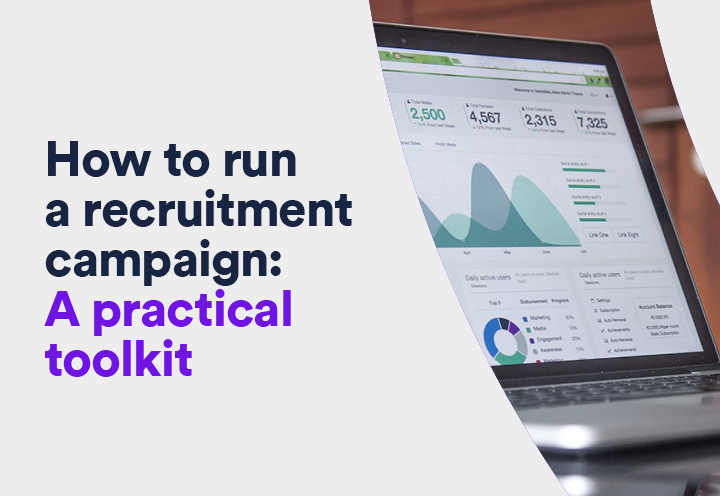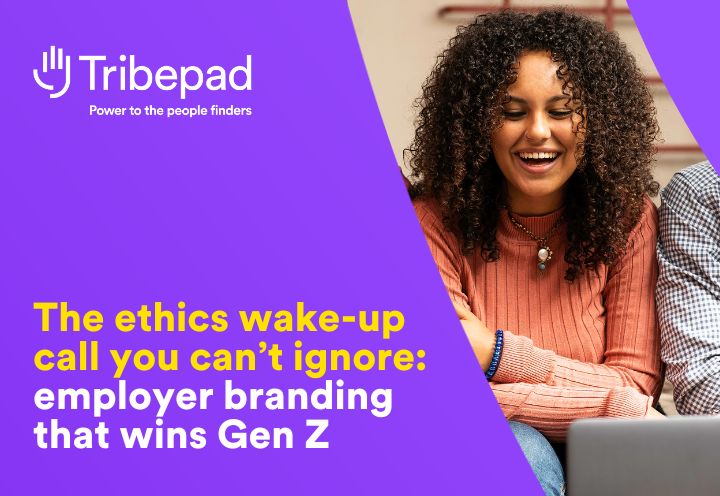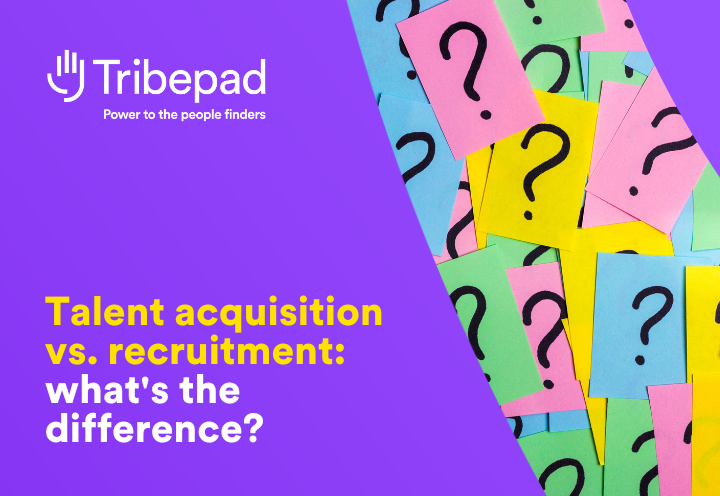Hiring the right people is harder than ever. More than 40% of large businesses say they’re struggling to recruit – and it’s hurting business performance enough to have a knock-on impact on GDP.
Recruiters are under monumental pressure to attract more high-quality candidates, plagued by extreme competition and dire skills shortages.
That’s where recruitment campaigns come in, within a proactive recruitment marketing strategy.
Instead of firefighting – frantically hunting the same active candidates as everyone else – you build warm, long-term relationships. Creating a network of engaged people who’re less likely on other recruiters’ radar and who’re willing to discuss new roles with you (even if just to consider passing along a referral).
Let’s dig into the nitty gritty. Here’s a step-by-step guide to running a successful recruitment campaign.
6 steps to running an effective recruitment campaign
#1 – Define your goals
Recruitment campaigns are typically more successful when you focus efforts on a narrow goal (“get more applications for this hard-to-fill role”) rather than broad (“overcome skills shortages”).
Some common recruitment campaign goals:
- Get more applications to a given role
- Get more high-quality applications
- Get more applications from diverse backgrounds
- Build employer brand awareness
- Add more passive candidates to your network
- Build engagement in your talent pools
- Get more referrals from employees
- Get more attendees for your recruitment event
Your goal will typically be triggered by a specific business problem.
Maybe you’re under pressure to decrease time-to-hire and lack of candidates for hard-to-fill roles is holding you back. Or perhaps you’ve got a high early high turnover rate and need to improve quality-of-hire. Or maybe you’ve got a low offer acceptance rate because your brand has some perception issues.
Now translate your goal into a target that’s Specific, Measurable, Achievable, Realistic, and Timely (SMART), so you can objectively measure success. Like, “increase diverse application rate to 20% of total applications by end-Q2”.
#2 – Define your audience
Your audience will stem from your goal. A narrow audience is important to create messaging that’s personalised and highly relevant. That’ll make your campaign more compelling (so more likely to be successful).
For example, maybe you’re planning an internal recruitment campaign for your employees, to increase referrals. Or maybe you’re targeting passive candidates in EMEA, or senior developers with exceptional C++ skills, or graduates from top-tier universities. And so on.
Your decisions here will impact how you run your campaign (see #4). If your audience is a talent pool of previous great interviewees, you’ll probably build an email campaign. But if your audience is graduates with certain degree types, you might run an advert on LinkedIn first.
P.S. Proactively sourcing and segmenting talent into talent pools is an excellent way to build relevant audiences for targeted campaigns – but make sure you collect explicit permission, to stay GDPR compliant.
#3 – Develop a concept
Even if your goal is to increase application volume, a recruitment campaign doesn’t just mean promoting a job advert. So roll your sleeves up and get creative.
A great campaign concept combines two things:
- An inside-out knowledge of your brand
- An incisive insight about your target audience
1. Knowing your brand…
… ensures your campaign activity is on-brand and reduces the risk of reputation-damaging missteps.
Think of recruitment campaigns like the drumbeat of your brand. Every campaign might feel very different but they should all align to your vision and values. Here’s where to cement your employee value proposition (EVP), if you haven’t.
2. A powerful audience insight…
… helps your campaign resonate with your audience, so it’s more memorable and more effective. A great insight is often the difference between MEH and WOW campaigns. The best insights are data-led, and typically emerge when you dig deeper into your target audience.
For example, social listening tools might show that many technical candidates’ major bugbear is they’re not given much creative input – that’s your insight. Then, knowing your EVP, you’d know that creative input is actually a major selling point of working in your dev team. So you could build a campaign highlighting the creative side of your roles.
Read more: Copywriting for recruiters: A practical toolkit
#4 – Decide how to bring your concept to life
Once you’ve agreed your message, you’ll need to decide how you’ll deliver it. Be guided by your goals, message, and audience to find the right channel and approach for your campaign. How you’ll resonate with active job-seeker students, for example, is different from passive senior executives.
Some options to consider:
- Gated downloadable content
- Short form content like blogs and PR
- Interactive content like quizzes
- Email marketing to your talent pools
- PPC advertising direct to your job advert
- Multi-media content like videos, webinars, podcasts
- Guerrilla stunts
- Games and competitions
Thinking outside the box can pay back big
Red Studios knew they’d struggle to hire programmers to grow because of a super competitive hiring landscape. So they identified their top 100 ideal candidates and sent them each a personalised engraved iPod with a custom message from their CEO inviting them to apply. Almost 100% did.
A word of caution though.
Running campaigns to talent pools can be an excellent tactic but it’s not a guaranteed win. Success hinges on three interconnected things:
- Good data. Your talent pools are filled with comprehensive profiles, without endless blanks and duplicates. And then…
- Good segmentation. Your talent pools are all tightly defined, so you can create highly relevant messaging that in turn drives…
- Good engagement. Your talent pools want to hear from you. They find your content interesting and relevant.
Don’t endlessly spam out jobs. Go back to #4 and think about a more creative concept that adds value and interest. For example, could you run a campaign for passive senior developers with a quiz to discover if they’re well-paid enough in their current role?
#5 – Create your landing page
In practice, almost all campaigns will need a landing page. That is, a dedicated standalone page dedicated to one conversion goal (like taking your quiz; downloading your eBook; watching your careers video; applying for your role).
You’ll typically drive traffic to your landing page from email, SMS, social media or PPC. A dedicated landing page helps you collect and convert more leads, and better track your campaign’s success.
Businesses with 10-15 landing pages increase conversions by 55% compared to those with fewer than 10. Those with more than 40 landing pages increase conversions by 500%.
For example, say you want to increase diversity applications. You create a recruitment video focussing on diversity in your company.
You could host this on your careers site but it’s probably more effective hosted on its own landing page. Then you can prompt visitors to apply for roles right after watching or share their email address to learn more.
Then instead of just knowing your view-count, you’d also increase applications and have engaged leads to nurture over time, building your future talent pipeline. And you can more easily attribute ROI to the video, making the case for future recruitment marketing investment.
#6 – Measure, learn, and optimise
Recruitment campaigns are a continual work-in-progress. Reverse-engineer success and failure, to increase your success rate. What worked? What didn’t? Where can you tweak as you go?
Maybe your video was awesome but PPC wasn’t an effective promotion channel. Perhaps your whitepaper missed the mark, but social media feedback showed you how to tweak your underlying insight.
If you’re new to running recruitment campaigns, don’t fret about everything being perfect. Every recruitment marketer has seen campaigns flounder – but even an unsuccessful campaign is more effective than no campaign at all. It’s an invaluable learning opportunity.
Over 25 million people use Tribepad’s talent acquisition software to build a more proactive recruitment function. Learn more about our Core ATS + CRM, featuring our recruitment campaign manager.




